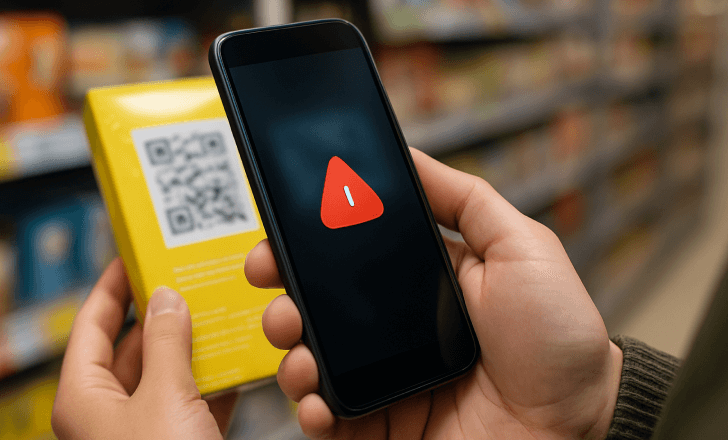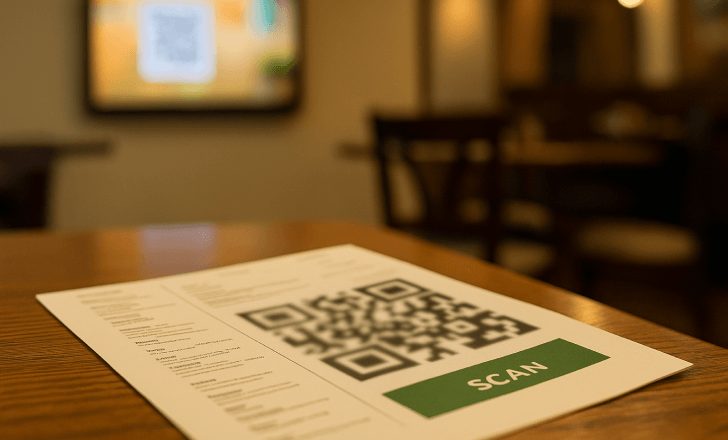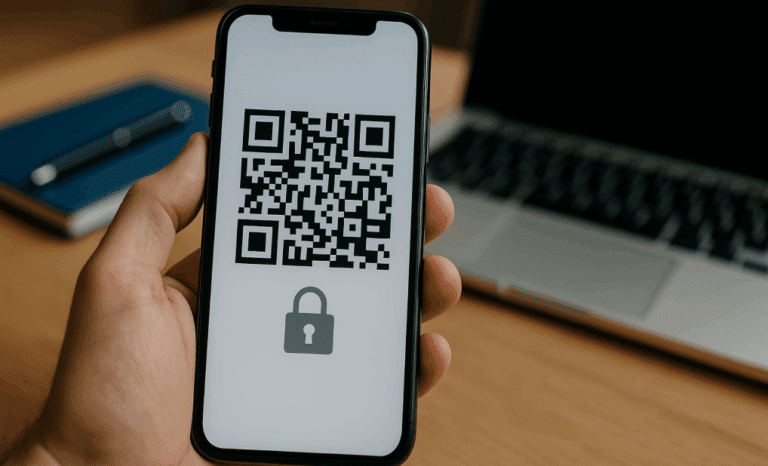Introduction: Why QR code blur matters
When it comes to QR codes, clarity is everything. A sharp, scannable code ensures a seamless user experience, while QR code blur can instantly break trust and stop engagement in its tracks. Whether on a restaurant menu, a product package, a website landing page, or a printed poster, a blurry QR code is more than just a design problem — it’s a barrier that makes data inaccessible.
In today’s mobile-first world, users expect smooth interactions. They don’t want to struggle with blurry images, unreadable files, or faulty printer settings. If the code doesn’t work instantly, they’ll abandon it. That’s why avoiding QR code blur is critical for any campaign that relies on scans.

The hidden cost of blurry QR codes
A QR code image that looks pixelated or unclear damages both function and perception. If the code is unreadable, it can’t deliver the intended link or promotion. That means:
- Lost conversions and reduced ROI.
- Frustrated users who give up.
- A brand image that feels careless or unprofessional.
Imagine spending thousands on print campaigns only to realize your printing quality caused blurred codes. Even when some scanners or mobile devices can interpret them, users still see poor design. The result? Lower trust and weaker engagement.
Why QR codes become blurry
Several factors lead to blurry QR codes, often before printing even starts.
- Low printer resolution: Printing a code at 72 DPI instead of 300 DPI often leads to blurred lines.
- Print speed settings: Fast printing may reduce quality, especially on low-end printers.
- File handling mistakes: Exporting a small PNG and enlarging it for posters or menus always creates distortion.
- Improper editing: Adding logos, colors, or gradients without the right contrast affects readability.
- Environmental factors: Poor lighting conditions, glossy paper, or physical damage can make scanning unreliable.
- Inverted colors: Light patterns on dark backgrounds may look stylish but confuse scanners on certain devices.
Every stage — from file export to display — can introduce blur if not handled properly.
How blurry QR codes affect campaigns
Think of a restaurant handing out menus where the QR code size is too small. Customers try to scan but can’t access the page with details. Or picture a retailer showing a commercial where the code looks fuzzy on-screen. Instead of engaging, viewers are left annoyed.
Blurry codes don’t just reduce scannability. They discourage users from trying again. In the fast-paced digital environment, that single failed scan often means losing a customer permanently. Reliability in QR codes is non-negotiable.

The good news: QR code blur is preventable
The best part is that QR code blur isn’t inevitable. By combining proper printer settings, high resolution QR codes, and smart file handling, you can guarantee a sharp design that works everywhere. Modern QR code sharpener tools and user friendly platforms like QRCodeKIT allow you to generate, edit, and download professional codes without worrying about blur.
The right strategy ensures your codes remain consistent across apps, websites, and physical displays. When done right, users don’t notice the technology — they just scan and access content instantly.
The risk of low-quality QR codes
Most blurred codes come from shortcuts. A marketer downloads a free small PNG, places it on a poster, and sends it to print. Once printed, the blurry image makes the code unreadable. Other common causes include:
- Compression from uploading to messaging apps or social media.
- Logos covering too much of the pattern.
- Using poor-quality printing materials like glossy or textured paper that scatter light.
- Not testing across scanners and other devices before publishing.
Each of these errors could have been avoided by using proper file formats, adjusting contrast, and checking resolution before final printing.

How to avoid QR code blur with high-quality files
1. Use vector formats whenever possible
Exporting codes as SVG or EPS ensures they scale without losing clarity. Whether on a flyer or a billboard, the design stays sharp.
2. Export raster images in high resolution
If vectors aren’t an option, create high resolution QR codes in PNG or JPG, ideally at 300 DPI or higher. This avoids pixelation during resizing.
3. Avoid enlarging small files
Never stretch a small file for big posters. Always generate the code at the intended size or download the correct format.
4. Watch out for compression
File-sharing tools often compress images. Use direct downloads, cloud storage, or reliable software to preserve resolution.
5. Maintain proper contrast
Use dark codes on a white background. High contrast ensures scanners interpret data correctly. Avoid patterns that create noise.
6. Use logos carefully
Logos should be high-quality and small enough to keep the code scannable. Poor integration can lead to QR code blur.
7. Test across environments
Scan your QR code with multiple phones, apps, and scanners. Test under bright light, dim settings, and on different screens. This prevents surprises during live campaigns.
Error correction helps, but it’s not everything
QR codes include error correction, meaning they can still function despite scratches, dust, or small errors. However, error correction can’t fix blur caused by low-quality exports or bad printer settings.
Think of it as insurance — helpful, but not a replacement for proper resolution and design. Always combine sharp design with the correct level of error correction.
Adding logos without causing blur
Customizing QR codes with logos increases trust and branding impact, but also introduces risk. To keep them sharp:
- Always upload logos as vector files or high-res PNGs.
- Place them within 20–30% of the total design.
- Maintain contrast between the logo and the QR pattern.
- Double-check scannability after editing with multiple devices.
When done right, a logo enhances recognition without sacrificing readability.

Practical tips to fix blurry QR codes
If you already printed a blurred code, here are some quick fixes and solutions:
- Re-export the file at higher resolution.
- Adjust printer settings for better quality.
- Switch to high quality printing materials.
- Reduce compression when uploading to an app or website.
- Add a clean white background to improve contrast.
- Use QRCodeKIT’s tools to generate and download a fresh, scannable code.
These steps ensure every QR code image is clear, functional, and reliable.

Conclusion
QR code blur is a preventable issue caused by low-quality files, poor printing, or careless customization. By focusing on resolution, proper printer settings, and high-quality materials, you can guarantee clear QR codes that scan instantly.
With QRCodeKIT, you can create, edit, and download professional QR codes in vector or high-resolution formats. Whether for a promotion, a printed campaign, or a digital post, your codes will remain sharp, scannable, and reliable on all devices.



